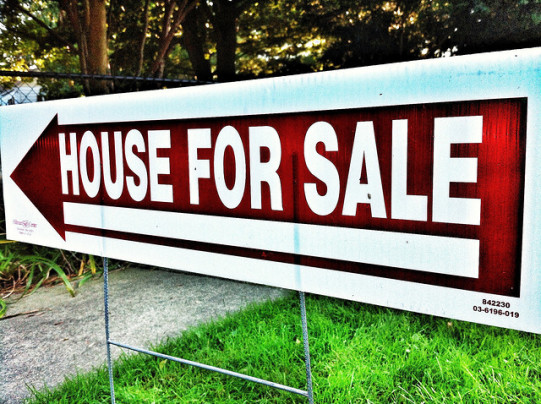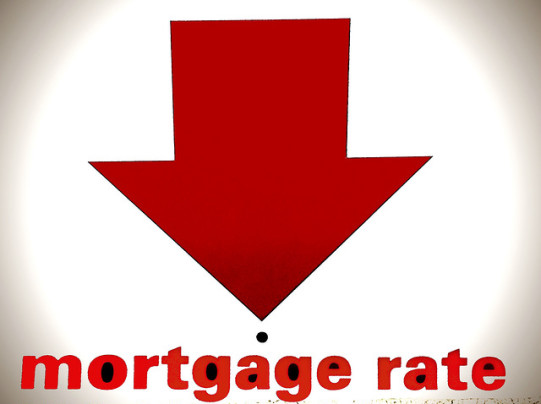According to the Mortgage Bankers Association’s Weekly Applications Survey, demand for mortgage applications spiked 7.1 percent last week due to falling mortgage rates. Average rates were down for 30-year fixed-rate mortgages with both conforming and jumbo balances, as well as loans backed by the Federal Housing Administration. On the other hand, the average contract interest rate for 15-year fixed rate mortgages was unchanged from the week before. Joel Kan, the MBA’s associate vice president of industry surveys and forecasts, says lingering economic concerns pushed rates lower. “With lingering concerns over a weak second quarter reading of US GDP growth, along with continuing anxiety over global growth and financial markets, rates edged lower for the second week in a row,” Kan said. Lower rates led to a spike in refinance activity, which was up 10 percent over the previous week. It also helped boost demand for loans to buy homes 3 percent higher than the week before. Purchase activity is now 13 percent higher than it was during the same week one year earlier. The MBA’s weekly survey has been conducted since 1990 and covers 75 percent of all retail residential mortgage applications. More here.
Archive for August 2016
How Real Estate Apps Have Buyers Hooked
New research from Google shows Americans spend an average of 55 minutes per visit when using real estate apps on their smartphones. The data – aimed at better understanding how buyers use technology during their house hunt – shows scanning through available homes for sale and looking at prices in different neighborhoods has become something of a past time, and not just for active buyers. In fact, the research shows that 64 percent of respondents said they keep checking homes for sale after they’ve made a purchase and one out of every five people looking at houses on real estate apps and websites aren’t actually in the market to buy. Additionally, nearly 70 percent said shopping for real estate online or on their phone was fun. The study highlights how new technology has changed how Americans shop for homes. John Thorton, a partner in Google’s real estate business, says apps and online listings have us hooked. “Customers roll over in the morning and start looking at real estate listings [on their phone],” Thorton said. Among the study’s other highlights, people begin looking at real estate sites an average of three years before they actually buy a home. More here.
Americans Say They Prefer Buying To Renting
Fannie Mae’s most recent Home Purchase Sentiment Index finds Americans feeling more optimistic about both the housing market and their income. In fact, the index set a new all-time high in July with each of the six components increasing from the month before. Perhaps most notably, the number of respondents who said they’d prefer to buy if they were going to move jumped to 67 percent, while the number who said they would rent set a new all-time low at 26 percent. Doug Duncan, Fannie Mae’s senior vice president and chief economist, says the trend is being led by younger Americans. “One interesting potential bright note for housing in the July survey is that younger households may finally be shifting toward buying rather than renting in greater numbers,” Duncan said. “Whether the shift in sentiment in July toward buying rather than renting on their next move holds up or is a temporary reaction to their view that rents are on the rise and mortgage rates will be lower, we will see. However, we are getting set to release some additional research in early August showing evidence of a broader move by older millennials in the direction of ownership.” More here.
Does Walkability Affect Home Values?
When potential home buyers are surveyed about the amenities and features they most desire in their new home and neighborhood, walkability is often high on the list. Having a house within walking distance to parks, shops, restaurants, schools and jobs is consistently coveted by buyers but not all that commonly found. In fact, a recent analysis found less than 2 percent of active listings had a “Walk Score” of 90 or higher. So, if walkability is so rare, does it affect a home’s price? In short, yes. The data showed an average increase of $3,250 per Walk Score point, though the effect was more pronounced in some areas than others. For example, in San Francisco a more walkable neighborhood increased a comparable home’s value by $187,630, while in Phoenix a similar increase in walkability only added $15,700 in value. There was even one area where proximity to businesses and services wasn’t a boost to home values. In Orange County, Calif., a walkable neighborhood had little to no effect on values due to a preference for privacy. Still, with 46 percent of older buyers and 56 percent of Millennials saying they’d prefer to buy in a walkable community, these homes – if you can find one – will more than likely be selling at a premium. More here.
Majority of Home Sellers Say Now’s The Time
In today’s real estate market, inventory is the big story. That’s because there are too few homes for sale in many markets across the country. And, when there are fewer homes for sale, competition among buyers heats up and current homeowners can be choosy when deciding which buyer to sell to. In other words, when there are more prospective buyers than there are homes for sale, prices go up. That’s a seller’s market. And according to one recent survey, current homeowners are starting to catch on. In fact, a survey of 1,700 homeowners found 52 percent thought now was a good time to sell in their neighborhood. Last year, just 34 percent of respondents said it was a good time to sell. In addition, there was a 14 percent increase in the number of participants who said sellers have more power than buyers in today’s market. But though a competitive market and confident sellers may seem like bad news for buyers, the more current homeowners who decide to take advantage of current conditions and put their homes up for sale, the more inventory will rise. As that happens, there will be more homes to choose from and price increases will begin to slow. More here.
Survey Finds Average Mortgage Rates Down
According to the Mortgage Bankers Association’s Weekly Applications Survey, average mortgage rates fell across all loan categories last week, including 30-year fixed-rate mortgages with both conforming and jumbo balances, loans backed by the Federal Housing Administration, and 15-year fixed-rate loans. But despite lower rates, demand for mortgage applications actually fell from the week before. In fact, the Market Composite Index – which measures both refinance and purchase application demand – was down 3.5 percent from the week before. Lynn Fisher, MBA’s vice president of research and economics, told CNBC that the number of Americans requesting loan applications is still higher than last year, though things are slowing. “Purchase application volume continues to run ahead of last year’s pace, but after growing quite strongly in the first half of the year, the rate of improvement has decelerated this summer,” Fisher said. Still, mortgage applications to buy a house are up 6 percent from one year ago. Refinance demand, on the other hand, is 56 percent higher than last year. The MBA’s weekly survey has been conducted since 1990 and covers 75 percent of all retail residential mortgage applications. More here.
Majority Of Millennials Want To Buy A Home
Over the past few years, a lower-than-usual number of young Americans have been buying homes. Historically, first-time home buyers made up around 40 percent of all home sales. In recent years, however, the number has been hovering just above 30 percent. Still, survey after survey shows that – despite not being as active in the market – young Americans still want to become homeowners. In fact, according to a recent survey from the National Association of Home Builders, 81 percent of respondents between the ages of 18 and 29 said they want to buy a home. That, combined with the fact that nearly 40 percent of total participants said they would like to buy a home in the next three years, is encouraging news for the residential real-estate market. Ed Brady, NAHB’s chairman, says homeownership is still an important part of the American Dream. “The survey shows that most Americans believe that owning a home remains an integral part of the American Dream and that policymakers need to take active steps to encourage and protect homeownership,” Brady said. Americans agree. The survey also found 72 percent in favor of the government providing tax incentives to encourage homeownership. More here.







